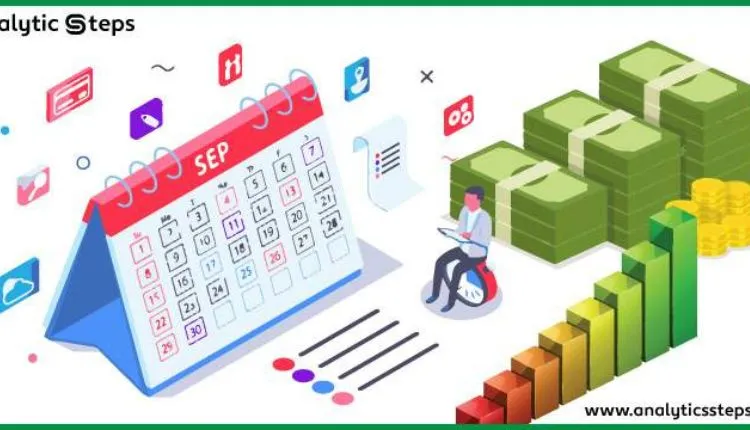Introduction:
The U.S. economic calendar is a powerful tool for investors, traders, policymakers, and businesses alike. It comprises a schedule of key economic events, data releases, and indicators that provide valuable insights into the health and performance of the nation’s economy. In this article, we will explore the significance of the U.S. economic calendar, its impact on financial markets, and how individuals can leverage this information to make informed decisions. Additionally, we will discuss some common misconceptions and frequently asked questions about economic calendars to equip readers with a well-rounded understanding.
I. The Importance Of The U.S. Economic Calendar
The U.S. economic calendar plays a crucial role in monitoring the nation’s economic activity. It lists a wide array of events, such as GDP reports, employment data, inflation figures, and manufacturing indices, which offer valuable insights into the overall economic health. Investors and traders closely monitor these releases to gauge the current economic trends and make more informed investment decisions.
- Impact on Financial Markets
Financial markets are highly sensitive to economic data releases. Positive or negative surprises in key indicators can trigger significant movements in stocks, bonds, currencies, and commodities. For instance, a robust jobs report may lead to a surge in equity prices, while weak retail sales figures could cause a decline in consumer-focused stocks. Understanding the potential market reactions to economic events is essential for traders looking to capitalize on short-term opportunities.
- Influence on Monetary Policy
Central banks, including the Federal Reserve, heavily rely on economic data to formulate monetary policies. By analyzing the U.S. economic calendar, policymakers gain valuable insights into inflationary pressures, employment levels, and overall economic growth. These data points help guide decisions on interest rates, which, in turn, impact borrowing costs, consumer spending, and investment activity.
II. Navigating The U.S. Economic Calendar
- Key Economic Indicators
The U.S. economic calendar features a plethora of economic indicators, each with its specific significance. Some of the most critical indicators include:
- Gross Domestic Product (GDP): GDP measures the total value of goods and services produced within a country’s borders. It serves as a broad indicator of economic health and growth.
- Employment Reports: Non-farm Payrolls and the Unemployment Rate are key indicators of the labor market’s strength and can influence consumer spending patterns.
- Consumer Price Index (CPI): CPI tracks changes in the prices of a basket of goods and services and is a key measure of inflation.
- Retail Sales: This indicator reflects consumer spending patterns and can be an early signal of economic strength or weakness.
- Interpreting the Data
Merely glancing at the economic calendar is not enough; understanding the context and trends behind the data is vital. Comparing the latest release with historical data and consensus forecasts helps determine whether the figures represent positive or negative developments. It’s crucial to be aware of seasonal variations, potential revisions, and methodological changes that can impact the data’s interpretation.
- Developing a Strategy
To leverage the U.S. economic calendar effectively, individuals must create a well-thought-out strategy. Depending on one’s financial goals and risk tolerance, they can use economic events to inform investment decisions, develop hedging strategies, or adjust portfolio allocations.
III. Common Misconceptions About Economic Calendars
- Myth: Economic Events Always Have a Predictable Impact
One common misconception is that economic events will always lead to predictable market reactions. In reality, markets are influenced by a multitude of factors, and reactions can be unpredictable, especially if data releases deviate significantly from expectations or if other geopolitical events are unfolding simultaneously.
- Myth: Short-Term Trading is the Only Way to Leverage Economic Calendars
While short-term traders often use economic calendars to capitalize on immediate market movements, long-term investors can also benefit from staying informed about economic events. Understanding the broader economic trends can aid in making strategic long-term investment decisions.
Conclusion:
The U.S. economic calendar is a valuable resource for anyone involved in financial markets or economic analysis. By understanding the significance of key economic indicators, interpreting the data effectively, and developing a well-thought-out strategy, individuals can navigate the dynamic waves of economic events with confidence. Staying informed through the economic calendar empowers investors, traders, and businesses to make more informed decisions and adapt to the ever-changing economic landscape.
FAQs:
Q1. Can economic events always predict market movements accurately?
While economic events can significantly impact financial markets, predicting exact market movements is challenging due to the complexity of factors influencing prices. Market reactions depend on how data releases compare to market expectations and how other global events unfold simultaneously.
Q2. How frequently is the U.S. economic calendar updated?
The U.S. economic calendar is usually updated in real-time as data releases are scheduled or adjusted. Websites and financial platforms often provide live updates on economic events and their associated release times.
